Table of content
Pickling daikon radish strips, a timeless culinary tradition enjoyed across various cultures, offers a delightful blend of tangy, sweet, and savory flavors. Daikon radishes, known for their crisp texture and mild, slightly sweet taste, transform into a delightful condiment or side dish when preserved through the pickling process. This article delves into the comprehensive guide on how to pickle daikon radish strips, from selecting the perfect radishes to achieving the ideal pickling brine, ensuring your homemade pickles are a hit every time.
Understanding Daikon Radishes
Before diving into the pickling process, it’s crucial to understand the star ingredient: daikon radishes. Native to East Asia, daikon (Raphanus sativus var. longipinnatus) is a large, white, elongated radish with a mild, slightly sweet flavor and a crisp, juicy texture. Its high water content and mild taste make it ideal for pickling, as it retains its crunch even after prolonged soaking in brine.
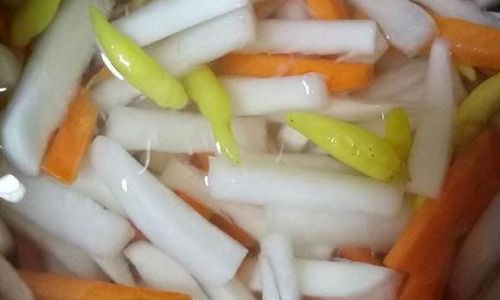
When selecting daikon radishes for pickling, look for firm, smooth, and unblemished roots. Avoid those with soft spots, cracks, or discoloration. Freshness is key; ideally, use radishes that have been harvested within a few days for the best texture and flavor.
Preparation: The Foundation of Success
Cleaning and Peeling
Start by thoroughly washing the daikon radishes under running water to remove any dirt or residue. Peel the outer layer using a vegetable peeler to ensure a smooth, even texture. While some recipes call for leaving the peel on for added texture and nutrients, peeling is recommended for a more refined pickled product.
Slicing Techniques
The thickness of the radish strips will affect both the pickling time and the final texture. For crisp, evenly pickled strips, aim for a uniform thickness of about 1/4 to 1/2 inch (6 to 12 mm). You can use a sharp knife or a mandoline slicer for precision.
- Knife Method: Hold the daikon firmly on a cutting board and slice it into strips, maintaining a consistent thickness.
- Mandoline Method: Adjust the mandoline to your desired thickness and glide the daikon over the blades for quick, even slicing.
Salting and Draining
To draw out excess moisture and firm up the texture of the radish strips, salt them lightly. In a large bowl, toss the sliced daikon with about 1 teaspoon of kosher salt per pound of radishes. Let the mixture sit for 30 minutes to an hour, stirring occasionally. The salt will cause the radishes to release their natural juices, creating a brine.
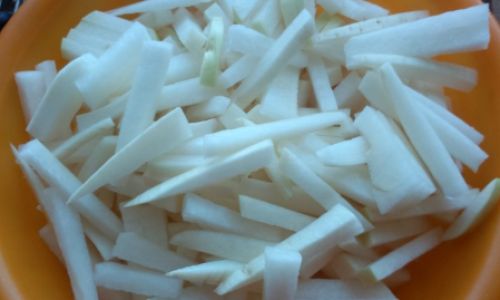
After the salting period, drain the radishes in a colander, pressing gently to remove excess liquid. This step is crucial for preventing the pickling brine from becoming too diluted, ensuring a well-balanced flavor.
Crafting the Pickling Brine
The brine is the lifeblood of pickled daikon strips, providing the tangy, savory flavors that make pickles irresistible. There are various brine recipes, each offering a unique twist on the classic pickled taste. Here, we’ll explore a few foundational brine recipes, each customizable to your taste preferences.
Basic Vinegar Brine
Ingredients:
- 2 cups distilled white vinegar
- 2 cups water
- 1/4 cup granulated sugar
- 2 tablespoons kosher salt
- 1 teaspoon whole black peppercorns
- 1 teaspoon whole coriander seeds
- 1 bay leaf
- 1 small red onion, thinly sliced (optional)
- 1 clove garlic, thinly sliced (optional)
Instructions:
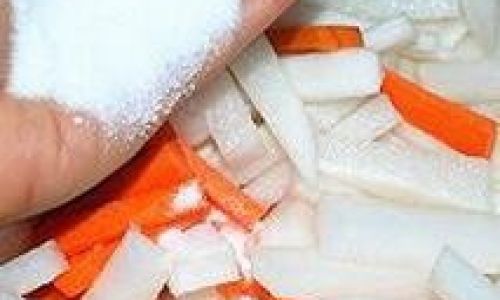
- In a medium saucepan, combine vinegar, water, sugar, and salt. Heat until the sugar and salt are fully dissolved.
- Add the peppercorns, coriander seeds, and bay leaf. If using, add the sliced red onion and garlic.
- Remove from heat and let the brine cool to room temperature. This ensures it doesn’t cook the radishes, preserving their crispness.
Rice Vinegar Brine with Ginger and Chili
Ingredients:
- 2 cups rice vinegar
- 1 cup water
- 1/4 cup granulated sugar
- 2 tablespoons kosher salt
- 1-inch piece of fresh ginger, thinly sliced
- 1-2 red chili peppers, thinly sliced (adjust to taste)
- 2 cloves garlic, thinly sliced
Instructions:
- Follow the same steps as the Basic Vinegar Brine, substituting rice vinegar for distilled white vinegar.
- Add the sliced ginger, chili peppers, and garlic to the brine.
- Let cool to room temperature before using.
Fermented Brine (for a Probiotic Boost)
For those interested in fermentation, a salt-based brine can be used to create naturally fermented daikon pickles.
Ingredients:
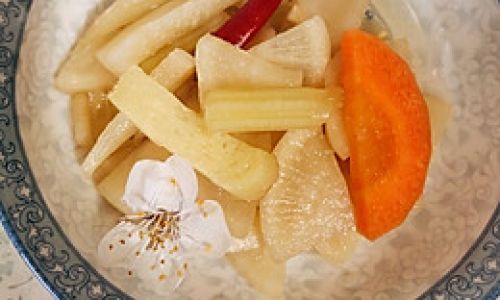
- 2 cups filtered water
- 2 tablespoons non-iodized salt (sea salt or kosher salt)
- 1 clove garlic, crushed
- 1-inch piece of fresh ginger, thinly sliced
- 1 small carrot, thinly sliced (for added color and flavor)
Instructions:
- In a clean, non-reactive jar or crock, combine water and salt. Stir until the salt is fully dissolved.
- Add the garlic, ginger, and carrot slices.
- Pack the salted daikon strips tightly into the jar, ensuring they are fully submerged in the brine. If necessary, use a fermentation weight or a smaller jar filled with water to keep the radishes submerged.
- Cover the jar loosely with a cloth or lid to allow gas exchange.
- Ferment at room temperature (around 70°F or 21°C) for 3-7 days, tasting daily until you reach your desired level of tanginess.
- Once fermented to your liking, refrigerate to slow further fermentation.
Pickling and Storage
Once your brine is ready and the daikon strips are prepared, it’s time to combine them and let the pickling magic happen.
-
Packing the Jars:
- Tightly pack the salted and drained daikon strips into clean, sterile jars. Ensure there are no air pockets to prevent mold growth.
- Pour the cooled brine over the radishes, ensuring they are fully submerged.
-
Sealing and Storing:
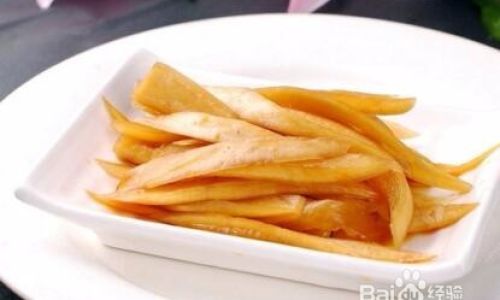
- Secure the jar lids tightly.
- For vinegar-based pickles, store in the refrigerator for at least 24 hours before enjoying, allowing the flavors to meld. They can be kept refrigerated for up to several months.
- For fermented pickles, once refrigerated, they can be stored for several weeks to months, depending on your taste preference for fermentation.
Serving and Enjoying
Pickled daikon strips are incredibly versatile, making a delightful addition to sandwiches, salads, sushi rolls, or simply enjoyed on their own as a crunchy, tangy snack. Their mild sweetness and crisp texture pair beautifully with a variety of dishes, enhancing flavors and adding a refreshing touch.
Conclusion
Mastering the art of pickling daikon radish strips is a rewarding culinary endeavor that combines science with creativity. By understanding the basics of radish selection, preparation, brine formulation, and storage, you can create delicious, homemade pickles tailored to your taste preferences. Whether you prefer a classic vinegar brine, a rice vinegar blend with ginger and chili, or the probiotic benefits of fermentation, the journey to perfect pickled daikon strips is both delicious and fulfilling. Happy pickling!


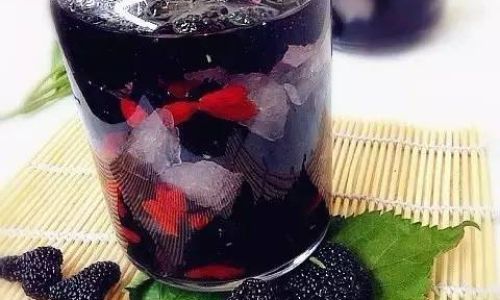
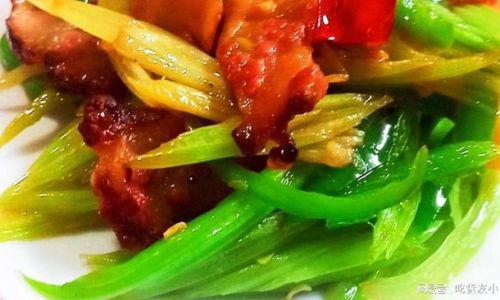
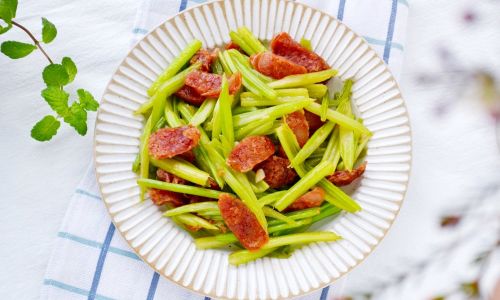
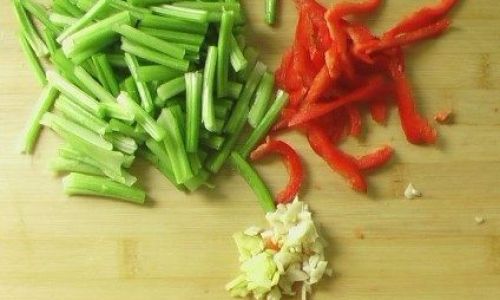
0 comments